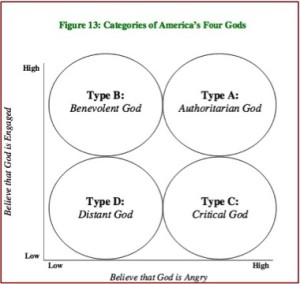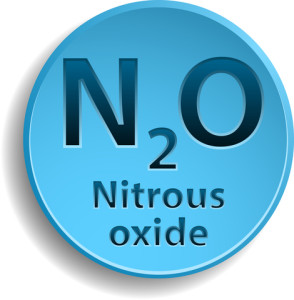Varieties of A.A. Experience
Philip Wylie was an American author, known mostly for science fiction novels, like When Worlds Collide, which was made into a 1951 movie, and Gladiator, which partially inspired Superman. He wrote on a variety of subjects ranging from science fiction, mysteries and satire, to the threat of nuclear holocaust and even penned some book reviews. His 1945 novel, The Paradise Crater, led to his house arrest because he described a post-WW II Nazi conspiracy to develop and use an atomic bomb several months before the first atomic test at Alamogordo. But before his house arrest, he wrote a little-known article in the 1944 September issue of the AA Grapevine.
An editor of the Grapevine had been in contact with him after he wrote a book review of The Lost Weekend by Charles Jackson for the NYT. He said the value of the book was the gifted insight of its author, “his shattering candor and his vivid intuitions.” What likely caught the eye of the editor of the Grapevine was his comment that the book could become a textbook for Alcoholics Anonymous. Wylie said in his Grapevine article his review showed he had an interest in alcoholics because he was one. But he quit on his own—without the help of a group like A.A. to assist or advise him. The help paralleled what he then knew about A.A.
The things I did are, maybe, the things many others are doing. I was psychoanalyzed twice. I studied psychology after that–Jungian, Freudian, Adlerian, behavioristic. Then I read all the basic religious books. Then I read the philosophies. Then I went to insane asylums, and looked at them.
Carl Jung himself suggested Wylie look at a few insane asylums, where he learned he was not going insane, as he had been unconsciously afraid of “precisely that.” Drawing on the Jungian idea of “transcendent symbol,” instead of the notion of the spiritual or religious, he said it may be of interest to alcoholics that there are abstract, non-religious routes “to this same, universal, human contact with inner integrity, truth and the ‘nature of nature itself.’” In getting sober, Wylie said he read everything on alcoholism he could find. He became interested in the care and condition of alcoholic friends. Clairvoyantly, he said the values of chemistry should not be overlooked. He was especially interested in A.A. because it represented “the first really effective effort to deal in kind and in scale and in the right category, with alcoholism.”
Bill W. commented on Wylie’s article in the same issue of the Grapevine, saying it should endear him to every A.A., because he was so very alcoholic! Bill invited Philip Wylie to become a member of A.A. whenever he wanted. No A.A. should be disturbed if he could not fully agree with all of what Wylie said. “Rather shall we reflect that the roads to recovery are many; that any story or theory of recovery from one who has trod the highway is bound to contain much truth.” Bill was intrigued by Wylie’s reference to spiritual experience “a la Jung” as “transcendent symbol,” but he thought that design for living was pretty inadequate. Humility and faith in the power of the Living God was a much stronger medicine.
A.A. draws frankly upon emotion and faith while the scientific intellectual would avoid these resources as much as he can. Yet the more intellectual techniques do work sometimes, reaching those who might never be able to take the stronger dose. Besides, they remind us, when over proud of our own accomplishment, that A.A. has no monopoly on reviving alcoholics.
From the earliest times of A.A.’s existence, its members recognized it wasn’t the only method, the only way to sober up alcoholics. There is an A.A. pamphlet, “Many Paths to Spirituality,” that addresses the misconception that A.A. is a religious organization. Buddhists, Catholics, Native Americans and even agnostics or atheists peacefully co-exist in A.A. One person said: “I’m still an agnostic. But I have discovered that the program will work for anyone who will let it. I didn’t have to find a way to make it work. It will work perfectly well on its own, provided I’m willing to do some work myself.”
I am a Sioux/Blackfoot woman. I have been sober in A.A. for many years. Many of us believe in the Great Spirit, and it was a great relief to find out I could believe in a higher power of my choice. I didn’t have to give up any part of my beliefs when I joined A.A. I could live in the white man’s world, but also retain all of my people’s Native traditions, customs and ceremonies. In fact, A.A. made my beliefs stronger. My joining A.A. didn’t restrict me, it gave me more freedom.I’m a devout, lifelong Catholic. That is an integral part of my experience, strength and hope. I call my higher power God and do not feel I should have to qualify that every time I speak at a meeting. I’m perfectly okay with others referring to Buddha, Mohammed, Yahweh, or whatever name they call their higher power.By incorporating basic Buddhist practices with my A.A. practices — regular meetings, doing service, working with newcomers, living the Steps and reading A.A. literature — I have discovered an awesome way to improve my conscious contact with the God of my understanding and live life on life’s terms in relative serenity.
In “The Buddha and Bill W.,” Regina Walker drew out the parallels between A.A. and Buddhism. She asked a Buddhist teacher, Noah Levine, if he believed the practice of Buddhism was complementary to the 12-step model of recovery, and he replied:
Most will find Buddhism to fit well with their 12-step process. It will depend on one’s concept of a Higher Power. If one believes that there is an all-powerful God that is the creator and controller of the universe, they may have difficulty understanding things like karma. But I think that most 12 steppers will find the universal principles like generosity, forgiveness, compassion and the meditative path of mindfulness as complementary to the steps. More importantly, those who have difficulty with the 12-step views on powerlessness and God, will find in Buddhism a recovery process that does not ask for belief, only encourages direct knowing.
Whether an individual is Buddhist, Catholic, agnostic or some other form of spiritual belief, they can fit within the structure of A.A.’s 12-Step recovery. The receptiveness of A.A. to alternate views of spirituality was part of its earliest thinking and expression. Bill W. read The Varieties of Religious Experience by William James soon after his last drinking episode and embedded James’s thought into the A.A. 12-Step program. Its enduring influence is seen by The Varieties of Religious Experience being the only book named in Alcoholics Anonymous, the A.A. Big Book itself.
See “What Does Religious Mean?”, “Spiritual, not Religious Experience” and “The God of the Preachers” for more on the spiritual-religious distinction made by William James and its influence within A.A. and 12-Step recovery. Bill’s article responding to that of Philip Wylie was reprinted in The Language of the Heart, a collection of his Grapevine writings. Several of Philip Wylie’s books are still in print and available on Amazon in both print and kindle editions.






